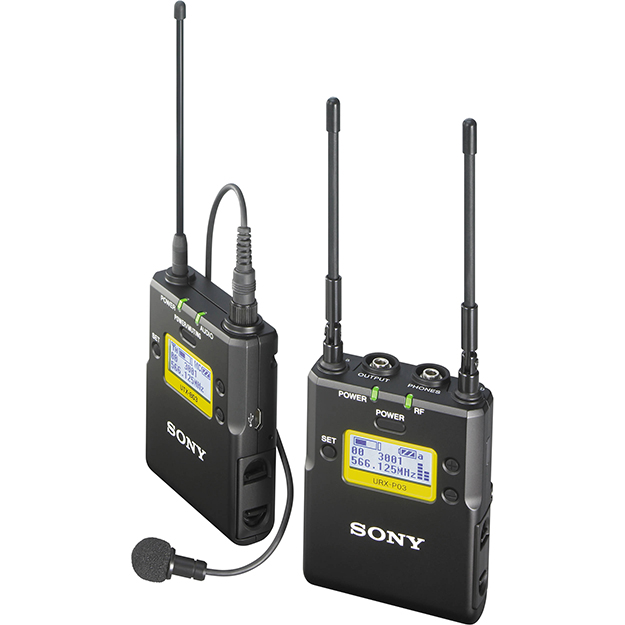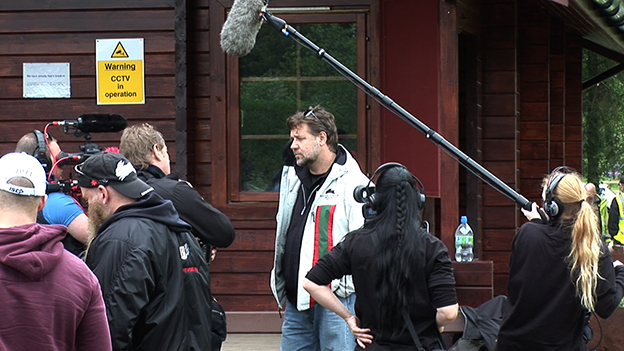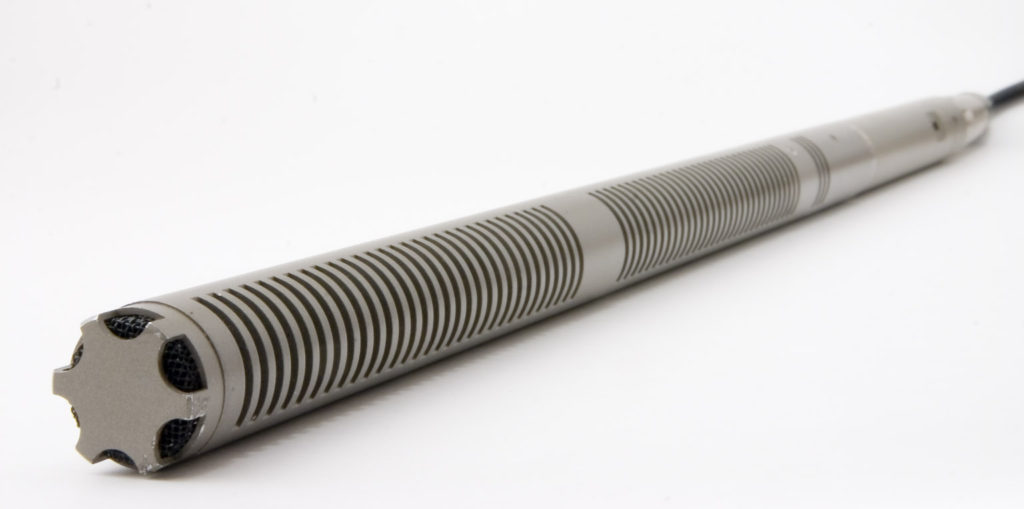Wow! That is a loaded question! 🙂 *snicker*
This was a question posed to me last night at a film association gathering… doctors get asked about peoples’ ailments at parties… I get microphone questions 🙂 This is a common question in the realm of video and film production, and the answers depend on the purpose of the project. First, a quick overview for newcomers.
 Shotgun and lavalier mics are the two most popular types used in video/film production. A lavalier (lav for short) is also referred to as a lapel mic – these are the tiny clip-on microphones that get attached to the talent. These days, they are semi-wireless: a wire carries the mic signal to a transmitter pack that is hooked to the person’s belt or pocket, or gets hidden completely. The receiver typically connects to the camera and feeds audio to it.
Shotgun and lavalier mics are the two most popular types used in video/film production. A lavalier (lav for short) is also referred to as a lapel mic – these are the tiny clip-on microphones that get attached to the talent. These days, they are semi-wireless: a wire carries the mic signal to a transmitter pack that is hooked to the person’s belt or pocket, or gets hidden completely. The receiver typically connects to the camera and feeds audio to it.
The advantages of lavalier mics are several: they are very close to the source, therefore pick up little outside noise from distant sources; being wireless means avoiding long cables and keeping the talent tied to the camera. Higher quality lavs pick up great quality sound, too – they are generally omnidirectional condenser mics.
The disadvantages tend to be physical and visual: they are easily rubbed and bumped by clothing and jewelry, which causes loud, unwanted noise. They also work best when visible, which is not preferred in cinema, as it breaks the fantasy created by a movie. Many methods can be used to hide them and to protect them from clothing noise – most of these techniques become a trade-off with sound clarity… the more hidden and protected, the more muffled the sound. In the live television world lavaliers are commonly used, as visibility is not as important. TV viewers have become accustomed to seeing them in live newscasts and other events. Also, lavaliers are being made smaller and therefore less visible.
Shotgun mics are long stick-like microphones that focus in on a sound source from a distance. They are commonly attached to the end of a long pole (often called a fish pole) and directly wired to the camera or a recording device. Shotgun mics tend to be very popular in movie making, as they are not attached to the talent and therefore there are no visibility issues. Depending on how far the mic is from the talent, it can capture great sound quality. Microphone distance can be an issue that comes up… the further it is from the subject, the more outside noise will be picked up by it. Camera shots often define how close you can get with a shotgun mic – the mic needs to stay out of the shot, so the audio operator is constantly checking to make sure it’s “out of frame”. Wider shots mean the mic has to be further away from the subject.
Also, shotgun mics tend to be very sensitive to the slightest breeze. You can solve this with a “furry” – a fur-based cover that blocks air movement without impacting sound quality much. Some audio ops use a shell-like structure called a zeppelin to protect the mic from unwanted air movement.
Another thing to consider when using a shotgun mic is that it often requires adding another person to the crew – the audio operator who holds the fish pole, making sure it is pointed in the correct direction, not in frame, and listening carefully while each shot is taken. If the subject is not moving, a mic stand can be used. It is also common to mount a shotgun mic onto a camera for a news interview setup – just be aware of handling noise.
So the answer is… it depends! In my microphone kit, I tend to prefer the shotgun for many of the reasons listed here, plus the fact that it just sounds better. My wireless lav isn’t bad. However, it’s not as crisp sounding and adds more hiss to the signal than the shotgun. A better quality lavalier would probably get more use 🙂
Keep those recorders and cameras rolling!
See you next time,
Mike


